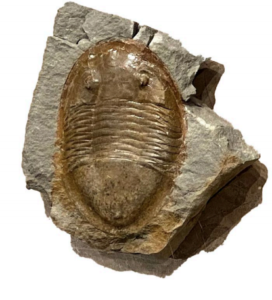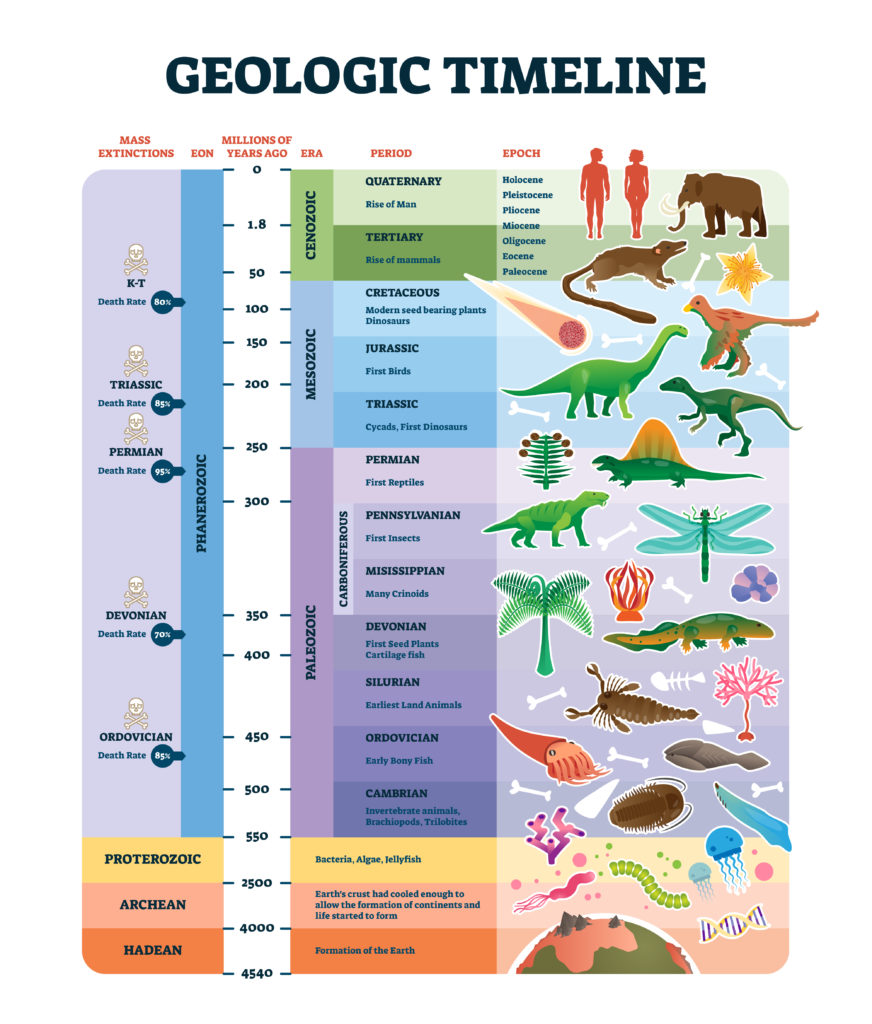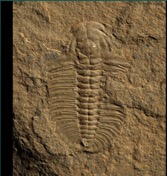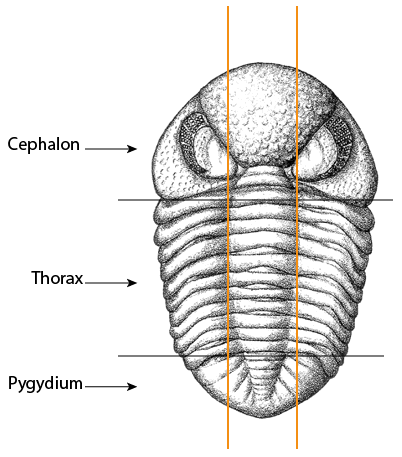
Isotelus iowensis, trilobite from McClung collection on view
Trilobites are extinct (no longer living) marine animals that resemble roly-poly bugs and are distantly related to today’s lobsters, crabs, insects and spiders. Trilobites lived in oceans around the world and their fossils can be found in Tennessee! Fossils are remains or impressions of an ancient organism preserved in a rock. They are geological evidence that can be dated and further investigated for clues about long-gone animals and ecosystems. Specialized scientists called paleontologists use trilobite fossils in their research of past environments.
It is easy to identify a trilobite because its body can be divided into different horizontal and vertical sections. The word trilobite refers to the three (tri) lengthwise lobes of the animal’s exoskeleton (external covering). Like insects today, trilobites have three distinct body segments: the cephalon (head), the thorax (body), and the pygidium (rear end). What insects do trilobites remind you of
Paleontologists have determined that there were many different kinds of trilobites living during the Cambrian period (542 million years ago) through
the end of the Permian period (252 million years ago), a timeline that extends the duration of the Paleozoic era (542-252 million years ago). Trilobites were most abundant during the Cambrian period and existed in oceans around the world. Different species of trilobites had distinct adaptations, or features, on their body that allowed them to survive in different environments. Some trilobite species have smooth bodies that would allow them to burrow on the ocean floor, other species have large eyes to help them see predators, and some have large spines that would help protect them in open waters. In many places in Eastern Tennessee and Kentucky you can find rocks that formed in the ocean during the time that trilobites were alive. Whole trilobites are rare in this area, but trace fossils, fossilized behaviors of organisms, of trilobites walking can be found at Veteran’s Overlook on Clinch Mountain.

Since trilobites are found all over the world and there is great diversity among them, they can be categorized as index fossils. Before scientists had modern chemical tools to learn how old rocks are, they used fossils to estimate the age of the rocks. This practice is called relative dating and with it, the age of a rock is estimated by analyzing the relationships between rock layers and fossils found in them.
Even though scientists today have more precise dating methods, they still rely on index fossils to help estimate the age of rocks. For a fossil to be considered an index fossil, it has to meet several qualifications:
- It is easy to identify
- It lived for a short period of time (in geological terms, on the order of only a few millions of years) allowing scientists to tell time most accurately
- It is globally distributed
For instance, Bathyuriscus rotundatus is a trilobite index fossil used to date rocks from the Middle Cambrian (505 million years ago). While this fossil is used as an index fossil in northwestern Canada, Cambrian rocks are also present in and around Knoxville and examples of similar trilobites have been identified in this region. The geographical distribution of Bathyuriscus rotundatus allows scientists to determine that the rocks the fossils are in are of the same age and come from the same environment.

Bathyuriscus rotundatus. Image source: The Burgess Shale
Trilobites have a well-documented fossil record recognized by scholars and amateur collectors alike. Next time you see a trilobite at a museum or on an outdoor adventure, remember how much they can tell us about environments from long ago!
Terms
Trilobites: extinct marine animal recognized by their distinctive three-lobed, three-segmented form
Fossils: remains or impressions of an ancient organism preserved in a rock
Paleontologists: scientists who study the history of life on Earth based on fossils
Adaptations: physical features of organisms that allow them to improve their chances of survival in their environment
Trace fossils: a fossil consisting of an imprint of or a mark left by an organism, as opposed to physical remains
Index fossils: fossils used for defining boundaries in the geologic time scale and for the correlation of strata
Relative dating: the process of determining if one rock or geologic event is older or younger than another, without knowing their specific ages in years.
Resources
